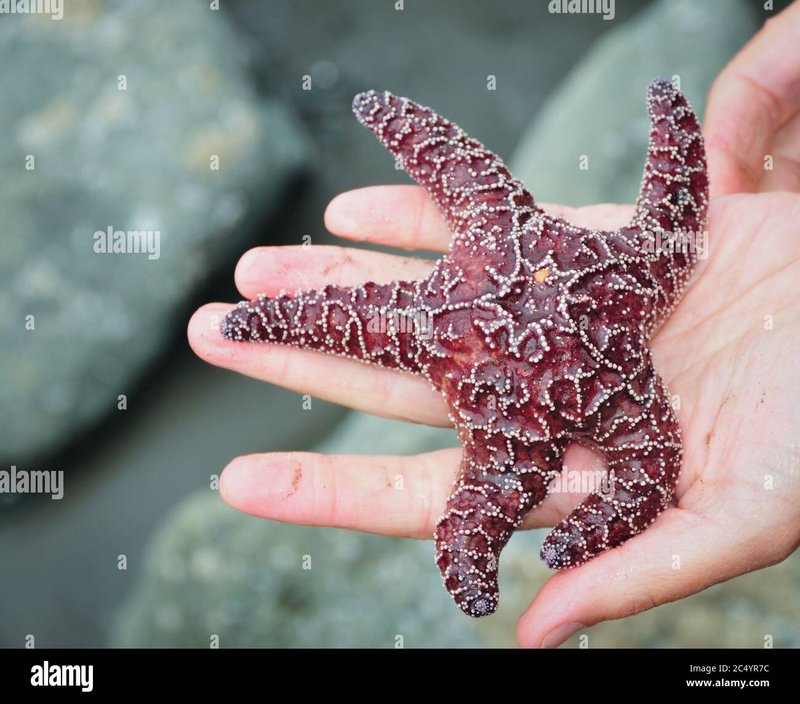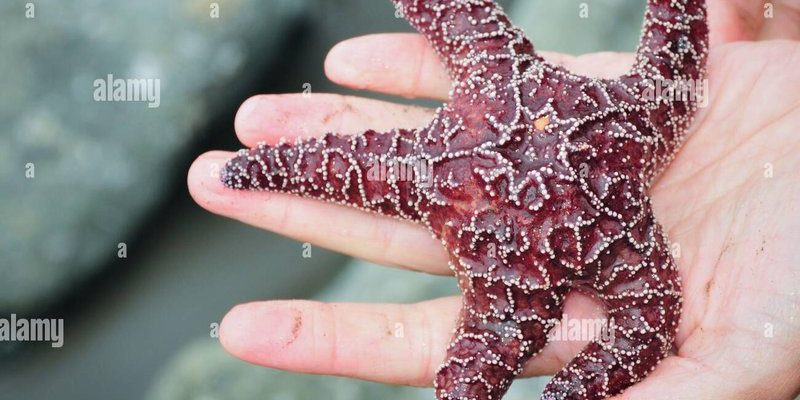
Starfish, or sea stars as they’re also called, are fascinating animals. They come in various shapes and colors, and they play an essential role in their marine habitats. But here’s the thing: while they might look inviting, approaching them without knowledge can be risky for both you and the starfish. So, let’s dive into the world of starfish and explore how to interact with these unique creatures safely.
Understanding the Starfish
To appreciate how to interact with starfish, you first need to understand what they are. Starfish belong to a group of animals called echinoderms, which also includes sea urchins and sand dollars. They have a soft body covered with a tough skin that can sometimes be spiny, and they come in a range of colors—from vibrant blues to deep oranges.
Now, you might be wondering, “What do they eat?” Starfish are carnivorous, feeding mainly on mollusks like clams and oysters. They have a unique way of feeding: they can actually extend their stomach out of their body to digest food outside. You might say they have a “no-mess” approach to dining!
Their habitat typically includes tide pools and coral reefs, where they can find plenty of food. Remember, disrupting this habitat can be harmful, so being aware of where they live is crucial for safe interaction.
Why Interacting with Starfish Matters
Interacting with starfish can be more than just a fun experience; it can help raise awareness about marine life and conservation. By learning how to interact safely, you become an advocate for their protection, which is crucial given the threats they face from climate change and pollution.
When people take the time to appreciate these creatures, it fosters a connection to the ocean and encourages efforts to preserve it. It’s like building a bridge between humans and marine life. The more we respect and understand these animals, the better off they’ll be, and the more we can enjoy observing them in their natural habitats.
So, the next time you think about reaching out to touch a starfish, remember that your actions can have a ripple effect on marine conservation. It’s all about creating a balance between curiosity and respect.
How to Interact with Starfish Safely
Here’s the good news: interacting with starfish can be safe if done correctly. Before you dive in, keep a few key points in mind:
- Observe First: Always take a moment to watch starfish in their natural environment. Use binoculars or your eyes instead of your hands.
- Minimum Contact: If you have to touch a starfish, do so gently and only for a brief moment. Remember, they’re not toys!
- Clean Hands: Before touching, make sure your hands are clean and free of any chemicals that could harm them.
- Return Them Carefully: If you pick one up, make sure to return it to the exact spot you found it, ensuring it has a chance to survive.
It’s about treating the starfish with kindness and care. They’re not used to being handled like pets, so your gentle touch is key to ensuring their well-being.
Common Mistakes to Avoid
When interacting with starfish, there are some common pitfalls you’ll want to steer clear of. These mistakes can cause harm not only to the starfish but also to the environment.
First, one big mistake is keeping starfish out of water for too long. Even a few minutes can be stressful for them. Although they can survive out of water for a short period, they need moisture to breathe. So, if you’re tempted to take a selfie with your new friend, make sure it’s a quick snapshot!
Another common error involves lifting starfish from the ocean floor. This can disrupt their feeding habits or damage their fragile bodies. Always approach with caution and respect their space—after all, diving into their world should be more about observation than manipulation.
Lastly, avoid collecting starfish as souvenirs. Not only is this harmful to their local populations, but it’s also illegal in many areas. Instead, take photos to cherish your memories while ensuring they stay safely in their home.
The Importance of Starfish in Ecosystems
Starfish play a vital role in maintaining the health of marine ecosystems. They are often considered keystone species, meaning their presence has a significant impact on their environment. By preying on mollusks, they help control the populations of these animals, contributing to the overall balance in their ecosystem.
Moreover, their feeding habits can also promote biodiversity. By removing certain species from an area, starfish allow for other organisms to thrive. It’s a delicate dance in nature, and every creature has its part to play.
So, as you consider interacting with starfish, remember their importance. By understanding their role in the ocean, you’ll not only appreciate them more but also become a champion for their preservation.
When to Avoid Interacting with Starfish
There are specific situations when you should definitely skip interacting with starfish. For instance, if you come across them during the breeding season, which varies by location, it’s best to give them space. Disturbing them during this critical time can disrupt their reproductive processes.
Additionally, steer clear of interacting with starfish if they appear to be sick or injured. If you notice damaged body parts or unusual behavior, it’s best to leave them alone. They need to be able to recover without stress from human interaction.
Lastly, avoid areas that are heavily polluted or threatened by human activities. Starfish in such locations are already facing challenges, and adding human disturbance can be detrimental to their survival.
Recognizing these situations will not only protect the starfish but also help preserve the marine environment for future visitors.
Interacting with starfish can be a rewarding experience when done thoughtfully and respectfully. You get to admire their beauty and learn about their important role in the ecosystem while ensuring that your actions don’t harm them. It’s like stepping into a little piece of the ocean and understanding the world beneath the waves—a truly magical experience!
So, next time you find yourself on a beach and spot a starfish, remember to be an informed and conscious observer. Your gentle touch and respect can help ensure that starfish continue to thrive in our oceans for generations to come. Being a good steward of the environment is something we can all contribute to, and who knows? You might just inspire others to do the same.

